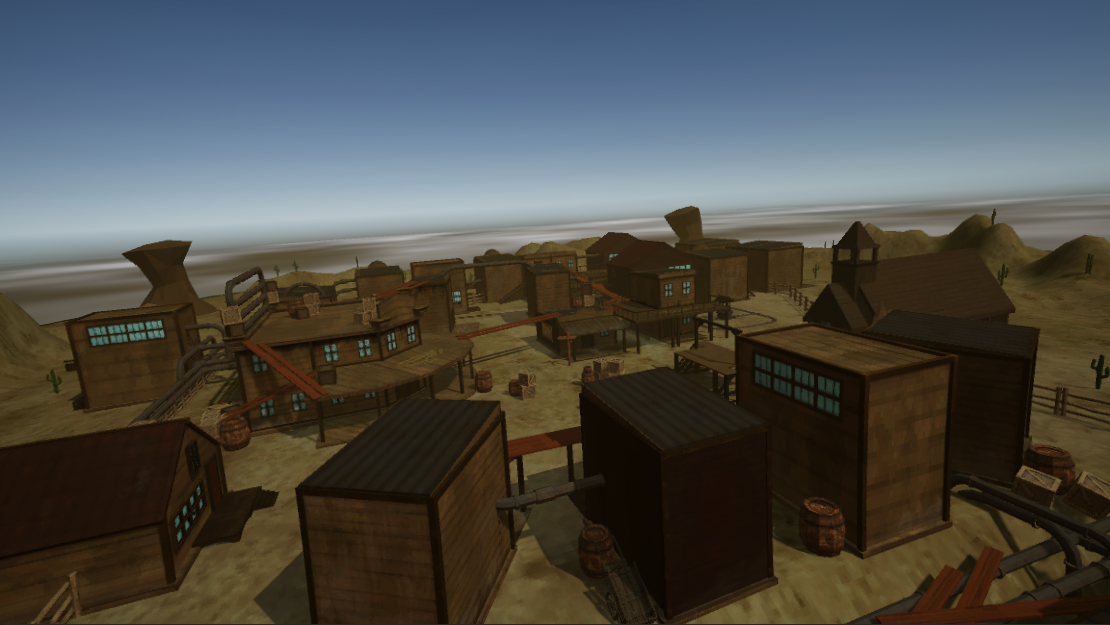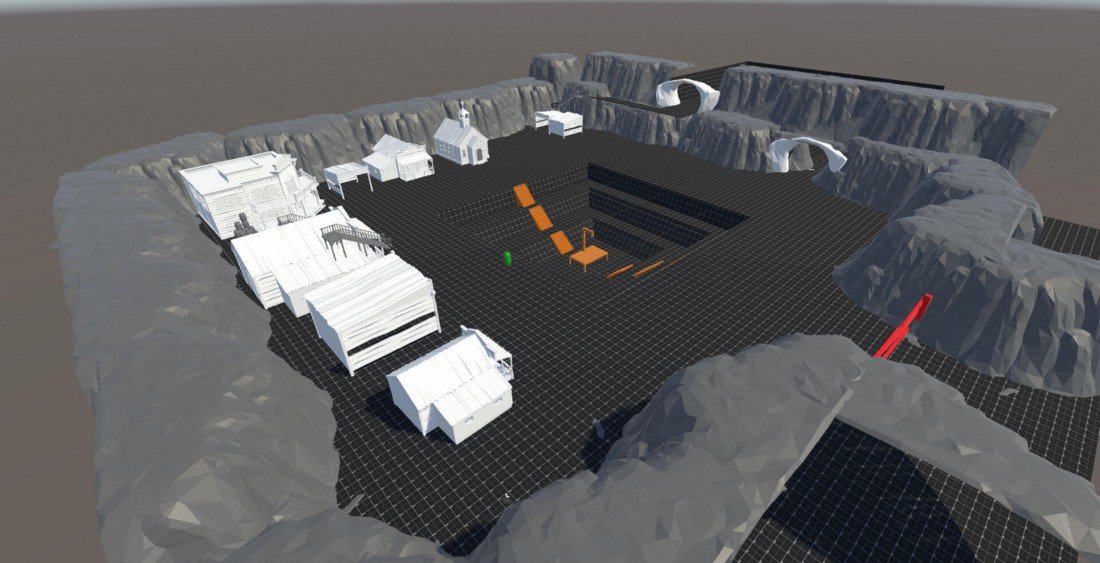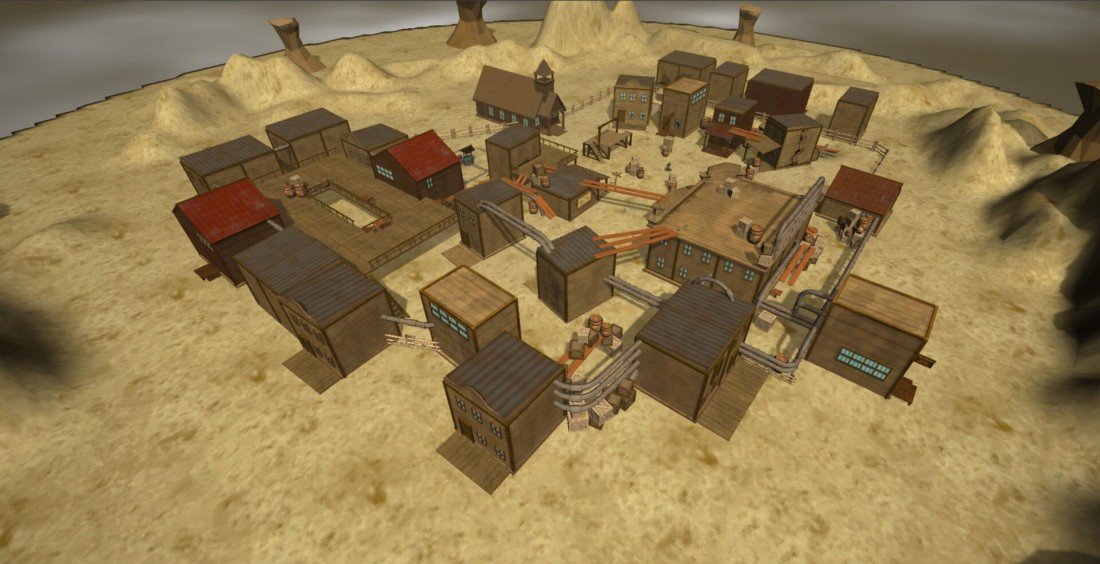
Rust to Dust
Rust to Dust is an action FPS set in a fictional steampunk recreation of the American Western Frontier in the 1800s. Players will shoot their way through an industrialised Wild West, fighting off hordes of robotic humanoid enemies, relying on unique weapon augmentations and their own skill to come out on top.
Project Outline
Timeframe: 9 weeks production
Engine: Unity
Roles: Level Designer
Genre: First-Person Shooter
Responsibilities
Concept and design level layouts for FPS arena shooter
Greybox level layouts
Designate enemy and ammo spawn locations and timers
Playtest and iteration
Rust to Dust was a nine week development project with a cross-disciplinary core team of thirteen members, built in the Unity Engine. The aim of the project was to create a FPS experience, developed around a list of criteria to be met provided by a client prior to pre-production.
For the project I took on the role of Level Designer. Here I applied my design skills to rapidly design and iterate greybox prototypes to facilitate, and cultivate a fast paced shooter experience.
In order to achieve the desired experience for our project, I focused on the following key elements in my level design:
Combat: Creating variety in play space to afford both long range and close-quarter combat. This included vantage points on top of buildings, and chokepoints in alley ways.
Movement: Creating and maintaining a flow through the space that can facilitate fast paced combat. This involved removing hard edges and nooks that the player could back peddle into and get stuck.
Strategy: Constructing areas of verticality to create vantage points and layers, while also balancing out these spaces so as not to create an overwhelming advantage for the player during combat.
One of the biggest challenges during development of this level was the handling of negative space.
Creating a level that could carry a fast paced shooter resulted in the level undergoing a lot of iteration early in pre-production. By the 4th iteration, negative space and the level size as a whole were moving in the right direction, but were still unacceptably large. To produce new results, the workflow was flipped. Instead of shrinking the level down, a reference environment put together by one of the team’s artists was expanded on. This resulted in a level with both achievable size, and a dynamic layout to act as the foundation for a fast-paced FPS experience.




